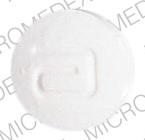Peganone and Alcohol/Food Interactions
There is 1 alcohol/food/lifestyle interaction with Peganone (ethotoin).
Ethotoin Food/Lifestyle
Moderate Food Interaction
Ethotoin levels may decrease when the suspension is given with enteral feedings. This could lead to a loss of seizure control. You could interrupt the feeding for 2 hours before and after the ethotoin dose. Alternatively, you may give the ethotoin suspension diluted in water and flush the tube with water after administration. These would make it easier for your body to absorb the medication. However, this still may not entirely avoid the interaction and may not always be feasible. You should have your ethotoin levels checked upon starting and stopping of enteral feedings. In addition, using ethotoin together with food may alter the effects of ethotoin. Contact your doctor if you experience worsening of seizure control or symptoms of toxicity, including twitching eye movements, slurred speech, loss of balance, tremor, muscle stiffness or weakness, nausea, vomiting, feeling light-headed, fainting, and slow or shallow breathing. If your doctor does prescribe these medications together, you may need a dose adjustment or special test to safely use both medications. It is important to tell your doctor about all other medications you use, including vitamins and herbs. Ask your doctor before making any changes to your therapy.
Switch to professional interaction data
Peganone drug interactions
There are 410 drug interactions with Peganone (ethotoin).
Peganone disease interactions
There are 7 disease interactions with Peganone (ethotoin) which include:
- blood dyscrasias
- liver disease
- porphyria
- suicidal tendency
- hyperglycemia
- megaloblastic anemia
- osteomalacia
More about Peganone (ethotoin)
- Peganone consumer information
- Check interactions
- Compare alternatives
- Reviews (1)
- Drug images
- Side effects
- Dosage information
- Drug class: hydantoin anticonvulsants
Related treatment guides
Drug Interaction Classification
| Highly clinically significant. Avoid combinations; the risk of the interaction outweighs the benefit. | |
| Moderately clinically significant. Usually avoid combinations; use it only under special circumstances. | |
| Minimally clinically significant. Minimize risk; assess risk and consider an alternative drug, take steps to circumvent the interaction risk and/or institute a monitoring plan. | |
| No interaction information available. |
See also:
Further information
Always consult your healthcare provider to ensure the information displayed on this page applies to your personal circumstances.


